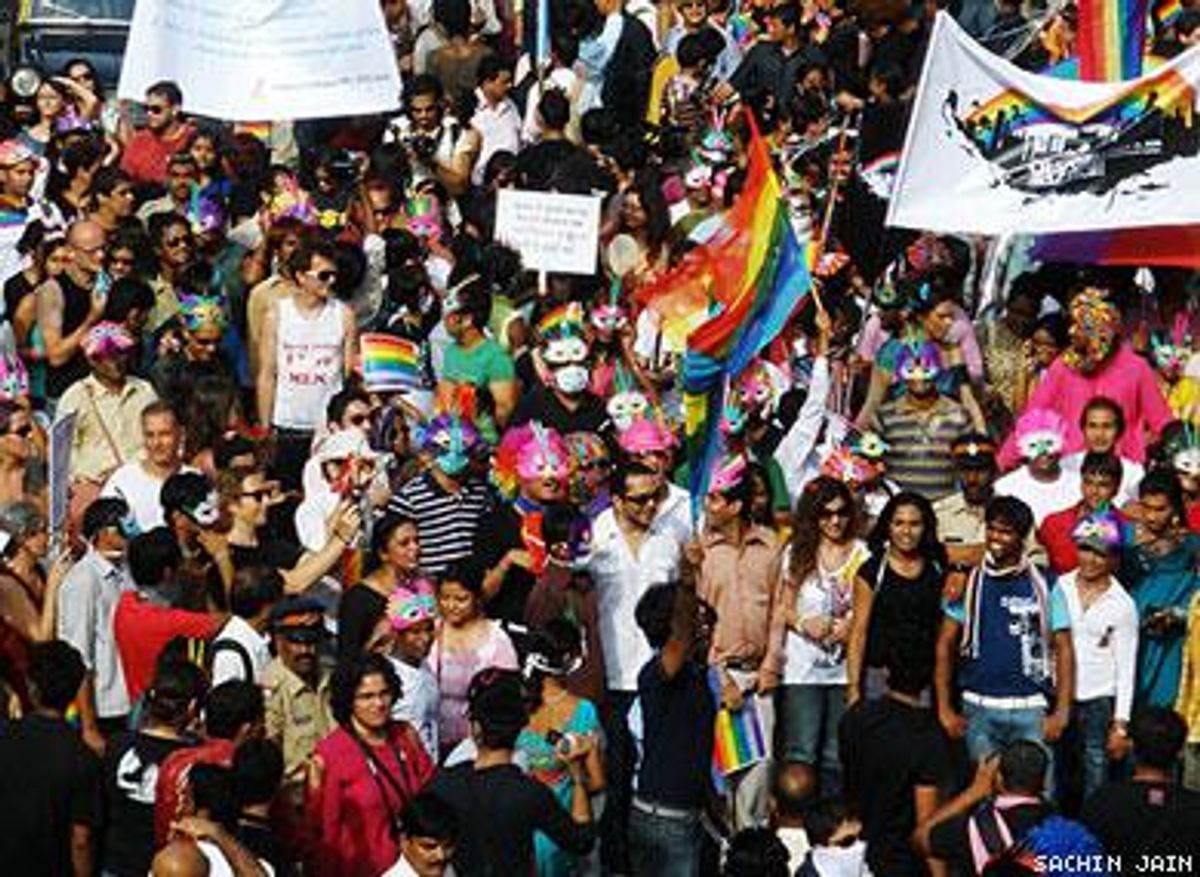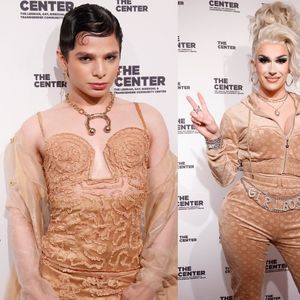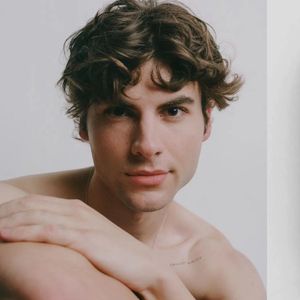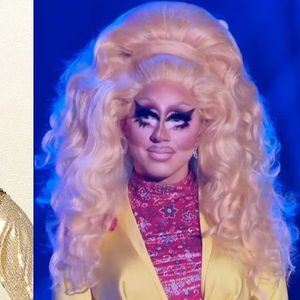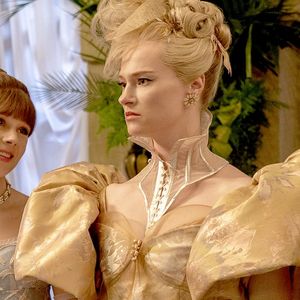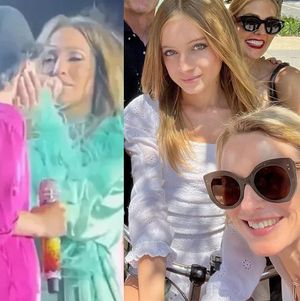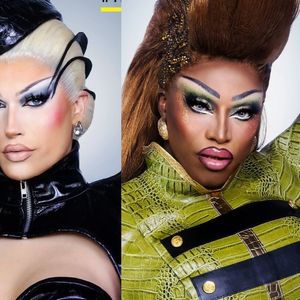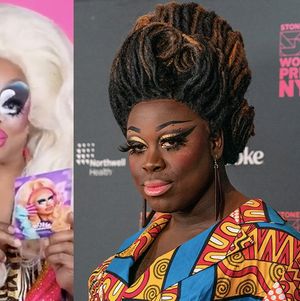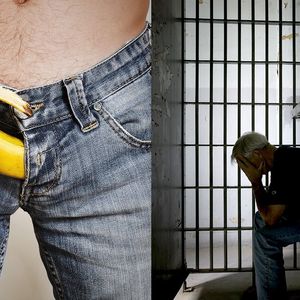All Rights reserved
By continuing to use our site, you agree to our Private Policy and Terms of Use.
Big, bold and beguiling, India rarely fails to transform visitors with its sheer onslaught of sensory stimuli. Yet while an ever-growing number of American queers are making the long trek to immerse themselves in the South Asian behemoth's many wonders, until recently a great many have left "gay" entirely out of their Indian trip mix, convinced that if there is such a thing as a queer India, it's likely buried too deeply for the short-term tourist to uncover.
That's all changing, as gay India continues to undergo a major transformation, one in which its previously below-ground LGBT scene is, albeit with baby steps, venturing evermore out in the open. Case in point: Mumbai's Queer Azadi (or Freedom) March, which in August drew an estimated 1,500 to 3,000 gay Indians to its second annual incarnation, doubling last year's attendance numbers in spite of Summer 2009's swine flu worries.
The most seismic shift yet toward queer Indian visibility had come a month earlier, when on July 2 the country's High Court repealed Section 377 of the Indian Penal Code, the British-era statute that for 150 years had criminalized sexual activity "against the order of nature." Though no convictions for homosexuality had actually been handed down in India for decades, the law had served, as similar laws do in so many other places, as a way to quietly sanction homophobia and mistreatment of the country's gay citizens.
While several conservative groups have opposed Section 377's overturn and are actively fighting the High Court's decision, India's Union Cabinet (comprised of its top ministers) has opted not to weigh in on the matter, leaving the ultimate decision with the country's Supreme Court. A ruling is expected in October.
Generalizations are impossible in a land so large and diverse as India, and this is certainly true when speaking of the country's massive and far-flung gay populace. Millions live in cities, millions more live in rural areas. Millions live openly as gay people, millions more live cloistered in traditional marriages and families.
"India is approximately where the U.S. was in the '70s," says Vikram Doctor, a prominent Mumbai-based journalist and LGBT rights activist. "So while there are lots of openly queer people and more and more young queer people who have no intentions of getting married, there are still a lot of queer people who came of age before the scene was so out and who did end up getting married. And it's still going to take time before things change."
As would be expected, the country's most progressive areas are its large cities, especially New Delhi, Bangalore and Mumbai. "All three cities have large-ish gay scenes," says Doctor. "Mumbai's is perhaps a bit more open because it's a bit more tolerant and cosmopolitan. It's in the DNA of the city -- people have come here from the rest of the country to make money, so they really don't care [about] much beyond that. I don't want to exaggerate how easy it is to be gay in Mumbai, but people are likely to care just a little bit less than in other cities. Also, there are industries like Bollywood, the fashion business and advertising, which have always been queer-friendly here."Each city has its own particular flavor in terms of its gay culture, Doctor adds. "Delhi has a larger NGO/activist scene, because it's a city more conducive to activists, politicians, and policy makers," he says. "Delhi also has a larger expat gay scene because of the embassies and allied trades. Bangalore has a lot of gay techies, and some good community-based spaces - it's a smaller, friendlier city, and that shows."
For the gay tourist, India is an always dazzling and sometimes bewildering place, not least in terms of finding queer locals. "Lots of foreigners feel that so much in Mumbai is cruisy, everyone looking and giving them the eye, and it's confusing," says Doctor. "Some of those guys are looking because you're foreign, some are looking because they think it's safer to have sex with foreigners than Indians, some are hookers, some want to sell you a carpet. Very confusing."
Despite the dearth of exclusively gay venues in India, Doctor says locals have no trouble finding places and ways to meet up. "Most cities have well known parks or places for cruising," he says. "The big cities have gay parties that are becoming meeting places. And of course, and hugely, there's the Internet. Sites like GayRomeo are particularly popular."
For travelers who want to meet gay Indians, Doctor says local LGBT organizations are an invaluable resource. "Check at sites like Gay Bombay for the next party or meeting," he recommends. "Also Time Out, which publishes in Delhi, Mumbai and Bangalore, always has a Queer Page with contacts for organizations."
Want more breaking equality news & trending entertainment stories?
Check out our NEW 24/7 streaming service: the Advocate Channel!
Download the Advocate Channel App for your mobile phone and your favorite streaming device!
From our Sponsors
Most Popular
Here Are Our 2024 Election Predictions. Will They Come True?
17 Celebs Who Are Out & Proud of Their Trans & Nonbinary Kids
Here Are the 15 Most LGBTQ-Friendly Cities in the U.S.
Which State Is the Queerest? These Are the States With the Most LGBTQ+ People
These 27 Senate Hearing Room Gay Sex Jokes Are Truly Exquisite
10 Cheeky and Homoerotic Photos From Bob Mizer's Nude Films
42 Flaming Hot Photos From 2024's Australian Firefighters Calendar
These Are the 5 States With the Smallest Percentage of LGBTQ+ People
Here are the 15 gayest travel destinations in the world: report
Trending Stories & News
For more news and videos on advocatechannel.com, click here.
Latest Stories
'Parents' Rights' movements forget families have the right to read LGBTQ+ books
This gay man had to flee Ghana after a violent attack. He’s finally been granted asylum
Ohio court temporarily blocks ban on gender-affirming care for trans youth
How library workers are defending books, democracy, and queer lives


